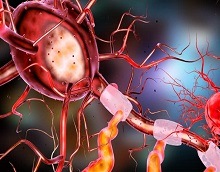 Intravenous tenecteplase was associated with a higher rate of intracranial haemorrhage (ICH), as compared to alteplase, in a recent analysis of real-world data from acute ischaemic stroke patients who did not undergo a thrombectomy procedure.
Intravenous tenecteplase was associated with a higher rate of intracranial haemorrhage (ICH), as compared to alteplase, in a recent analysis of real-world data from acute ischaemic stroke patients who did not undergo a thrombectomy procedure.
Navpreet Bains (University of Missouri, Columbia, USA) and colleagues write in the Journal of Stroke and Cerebrovascular Diseases that, while alteplase has long been considered the go-to in intravenous thrombolysis (IVT) treatments for acute ischaemic stroke, many US centres are currently switching to tenecteplase.
This is in spite of what Bains et al posit is a “paucity of comparative data” between tenecteplase and alteplase in real-world settings.
In an effort to rectify this, the authors analysed the data from 122 healthcare facilities in Cerner real-world data, including patients admitted between February 2016 and April 2022, to determine the effect of intravenous tenecteplase versus alteplase. Two outcomes in acute ischaemic stroke patients—non-routine discharge or death, and ICH occurrence—were stratified by use of thrombectomy, and adjusted for potential confounders.
Among the 30,643 acute ischaemic stroke patients who were analysed, 29,480 (96.2%) and 1,163 (3.8%) patients intravenously received alteplase and tenecteplase, respectively. The proportion of patients who received a thrombectomy was “significantly higher” among patients who received tenecteplase (16.7%) compared with those who received alteplase (11%).
“Occurrence of ICH was more common among patients treated with intravenous tenecteplase in acute ischaemic stroke patients who did not receive thrombectomy (7.9% vs 5.1%) but not in those who received thrombectomy (20.1% vs 16.8%),” Bains et al write.
In the logistic regression analysis, patients treated with tenecteplase who did not receive thrombectomy were found to be at a higher risk of ICH too—after adjusting for age; gender; race/ethnicity; and a number of comorbidities, including hypertension, diabetes mellitus, atrial fibrillation, hyperlipidaemia, and previous ICH.
“There was no difference in the rate of non-routine discharge or death between patients treated with intravenous tenecteplase, and those treated with intravenous alteplase, in the multivariate analyses,” the authors add.













